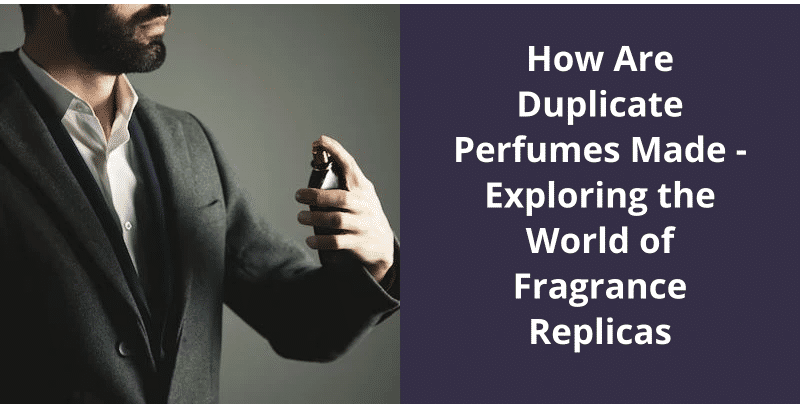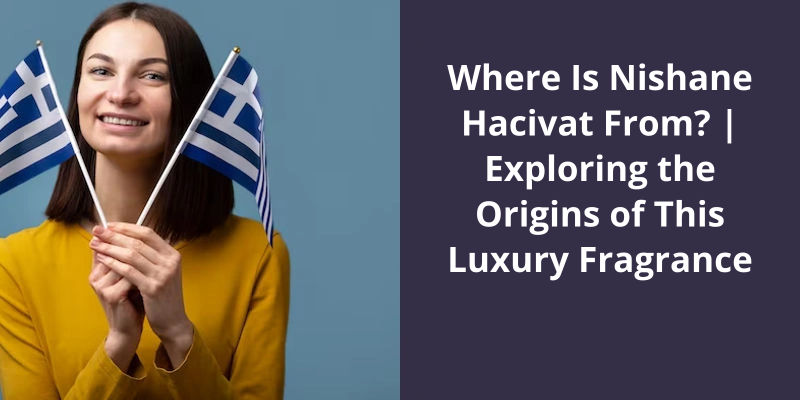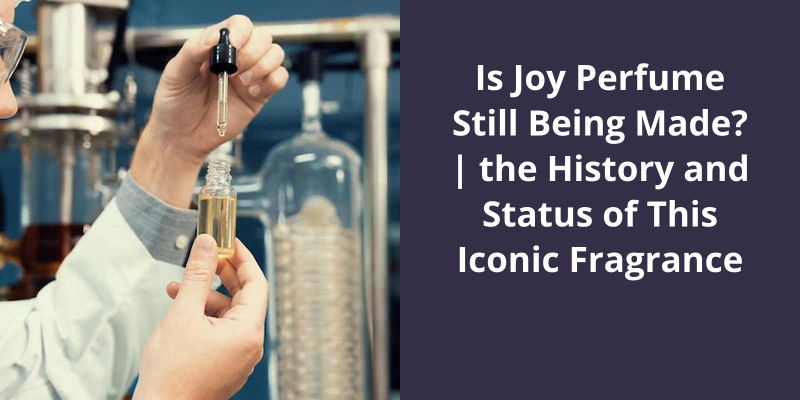Duplicate perfumes are made by analyzing the original scent with special equipment and deciphering its unique chemical composition. After this step, individuals trained in the art of scent creation, also called “noses”, work on recreating the fragrance with a variety of synthetic and natural elements. They leverage advanced lab technology to match the nuances of the original scent closely. Frequently, these replicas might not be spot on, as the exact formula of the original scent is a closely guarded secret, and certain ingredients may be too costly to use or difficult to obtain. Despite these challenges, the final product often resembles the original closely enough to be considered a dupe or duplicate.

Can You Get a Perfume Replicated?
Perfumes are made using combinations of essential oils, extracts from botanicals, and synthetic fragrances. The creation of a new fragrance is often inspired by a multitude of factors including the latest fashion trends, a particular event or person, or a specific occasion. For example, some fragrances are created to evoke the emotion of love, while others are designed to conjure the feeling of peace and tranquility. Each fragrance is unique and there’s no standard formula for perfume creation.
When it comes to recreating a specific fragrance, fragrance duplication is the common solution. It involves analyzing a sample of the perfume to identify it’s individual scents and chemical compositions. Then, a similar fragrance is created to match the original as closely as possible. However, creating a duplicate fragrance can be a challenging task, especially if the recipe is unknown. In some cases, perfume companies may have to rely on their expertise to create a scent that replicates the original fragrance.
Some perfume companies use the latest technology to recreate and analyze the scent of their clients favorite fragrances. They use special equipment to identify each component of the fragrance and create a formula that’s similar to the original.
The fragrance duplication process can take several months or sometimes even years to complete. They combine different notes such as floral, fruity, woody, or spicy, to create a scent that’s both pleasing and memorable. They also consider the intended audience- whether they’re male or female, young or old, and the season in which the fragrance will be worn.
The Science Behind Perfumery and How Fragrances Are Created.
- The process of creating fragrance involves blending different scents together in a specific ratio.
- Individual scents are obtained from natural sources such as flowers, fruits, and spices, or synthesized in a lab using chemicals
- The chemical composition of a fragrance determines it’s aroma, potency, and longevity.
- Fragrance makers use advanced analytical tools like gas chromatography and mass spectrometry to identify and isolate different scent compounds.
- The art of perfumery involves finding the right balance between different scent notes to create a unique and pleasing aroma.
- Fragrance creation is a highly specialized field that requires a deep understanding of chemistry, anatomy, cultural preferences, and market trends.
With that said, it’s important to be cautious when purchasing a perfume clone. It’s essential to ensure that the manufacturer is reputable and that the ingredients used are safe for use on the skin. In this article, we’ll explore the world of perfume clones and determine if they’re a safe alternative to their original counterparts.
Are Perfume Clones Safe?
This can lead to lower quality ingredients being used, or even the presence of harmful chemicals. It’s important to do your research and find reputable companies that offer high-quality clones. Many companies will list their ingredients and even undergo third-party testing to ensure their products are safe.
Another concern with perfume clones is the potential for allergies or other adverse reactions. While the ingredients may be similar to the original fragrance, everyones body chemistry is different, and a minor variation in the formula could cause a reaction in some people. It’s always a good idea to test a small amount of the perfume on your skin before using it all over your body. If you do experience any adverse reactions, it’s best to discontinue use immediately and seek medical attention if necessary.
One benefit of perfume clones is the cost savings. Original designer fragrances can be quite expensive, but there are many affordable clones on the market that offer a similar scent profile. This makes it more accessible for people who love a certain fragrance but cant justify the high price tag.
It’s also worth noting that not all perfume clones are created equal. Some companies put a lot of effort into creating an accurate replica, while others simply rely on the name and packaging to sell their product. It’s important to read reviews and do your research to ensure you’re getting a high-quality product that lives up to your expectations.
How to Identify a High-Quality Perfume Clone and Avoid Low-Quality Imitations
- Check the packaging for any spelling mistakes or irregularities.
- Inspect the bottle for any imperfections such as scratches or uneven printing.
- Compare the fragrance to the original to identify any discrepancies in scent.
- Feel the texture of the perfume as high-quality perfume clones often have a smoother texture.
- Inquire about the perfume’s ingredients and origins.
- Research the seller and read reviews before purchasing.
- Be wary of significantly discounted prices as this could be a sign of a low-quality imitation.
Perfume lovers often search for affordable alternatives to their favorite fragrances. While some may be hesitant to try perfume dupes, it’s important to note that they aren’t illegal knockoffs or counterfeits. Instead, these products offer a legal and affordable way to enjoy similar scents without breaking the bank. It’s important to understand the difference between perfume dupes and illegal copies to make informed purchasing decisions.
Are Perfume Dupes Illegal?
Perfume dupes are essentially products that mimic the scent of a high-end perfume, but are made by a different company. These products are typically sold at a lower price point than the original perfume, making them popular among budget-conscious consumers. While there’s some controversy surrounding the use of perfume dupes, they’re generally considered legal as long as they don’t infringe on any copyrights or trademarks belonging to the original perfume brand.
Additionally, some consumers actually prefer the scent of the dupe to the original fragrance.
Determining whether a perfume is an authentic product or a counterfeit can be a tricky task. However, there are several signs that you can watch out for that may indicate that the perfume is a copy. From messy cellophane to excess glue or adhesive tape, there are a few key indicators that should raise red flags when examining a perfume box. So, it’s important to carefully examine the packaging to avoid falling for a fraudulent product.
How Do You Know if a Perfume Is a Copy?
Make sure it’s the same design, color, and font as the original. If there are any discrepancies, the perfume may be a copy. Check the bottle for quality and authenticity marks. These may include a serial number, batch code, or logo of the brand.
Another way to identify a fake perfume is to compare the scent to the original. If the scent is off, it may be a fake. However, this can be difficult to do if you haven’t smelled the original. To avoid buying a fake perfume, only purchase from reputable retailers or directly from the brands official website.
Another telling sign of a fake perfume is it’s price. If the price is significantly lower than the retail price, it’s likely a fake. High-end brands invest a lot in their products, and it’s unlikely they’d sell them at a greatly reduced price.
Legitimate perfume boxes often have detailed packaging and include items such as product information inserts, warranty cards, or authenticity certificates. If these are missing or look poorly made, it may be a sign that the perfume is fake.
Look for messy cellophane, excess glue or tape, discrepancies in the packaging design, lack of quality and authenticity marks, a scent that’s off, a price that’s too good to be true, and missing or poorly made packaging materials. By being vigilant and doing your research before making a purchase, you can avoid falling victim to counterfeit perfumes and ensure that you’re getting a quality product.
The use of counterfeit fragrances has been on the rise in recent years, with many people purchasing these fake perfumes unknowingly. These perfumes may contain harmful and toxic ingredients that can cause serious health issues. Despite the efforts of industry experts like Valerie Salembier to raise awareness about the dangers of counterfeit fragrances, consumers continue to be at risk. In this article, we’ll delve deeper into the dangers of fake perfumes, including what ingredients are commonly found in them and what you can do to protect yourself.
What Ingredients Are in Fake Perfumes?
The counterfeit perfume industry is booming, with reports of counterfeit fragrances now constituting up to 20 percent of global perfume sales. These fake perfumes are made using a range of ingredients, some of which are highly toxic and can cause significant harm to the user.
One of the most common ingredients found in counterfeit perfume is urine. This substance is often used to create a base for the fragrance, as it’s cheap and readily available. Unfortunately, urine can contain a range of harmful bacteria and viruses that can cause serious skin infections and other health problems.
Another common ingredient found in fake perfumes is antifreeze. This substance is used because it’s a sweet, pleasant smell and can help to mask other unpleasant odors. However, antifreeze is extremely toxic and can cause serious harm if ingested or absorbed through the skin.
Counterfeit perfumes may also contain a range of other harmful substances, such as methanol, a solvent that can cause blindness if it comes into contact with the eyes. Other common ingredients include methylene chloride, a carcinogen that’s been linked to a range of health problems, and phthalates, which can cause hormonal disruptions and other health issues.
Source: How are fake perfumes made?..
However, the desire to resurrect a beloved scent is often too strong to ignore. Even with the challenge of recreating a perfume, some have dedicated themselves to finding a way to bring back discontinued fragrances.
Can a Perfume Be Recreated?
However, the question remains: can a perfume be recreated? The answer is both yes and no. The process of creating a fragrance is complex and reliant on the use of specific ingredients in precise measures. When a discontinued scent disappears from the market, the likelihood of replicating it’s slim, as the original ingredients may no longer be available, or the manufacturing process may have changed.
However, it isnt just about the ingredients themselves. The balance of the notes in a fragrance also plays a critical role in it’s overall scent. A slight change in the proportion of ingredients can drastically alter the final scent, rendering a recreation vastly different from the original.
Many perfume makers will go to great lengths in an attempt to recreate a beloved scent once it’s been discontinued. They’ll carefully analyze the original formula, seeking out any details or hints to aid in the recreation process. If they’re lucky enough to acquire samples of the original, this can be a significant help in identifying key ingredients and proportions.
Another way to recreate a scent is to take inspiration from the original but create a new fragrance that features similar notes. This involves identifying the key components of the original scent and using them as a foundation to build a new fragrance that utilizes similar ingredients in slightly different ratios. While this approach isn’t entirely true to the original, it can help to create a new scent that captures the spirit of the discontinued fragrance.
While it’s possible to recreate a perfume, the process is complex and reliant on the availability of key ingredients and accurate manufacturing techniques.
Conclusion
In conclusion, the production of duplicate perfumes is a concerning issue that greatly impacts the fragrance industry. Counterfeiters attempt to deceive customers by creating cheap imitations that often contain harmful ingredients. To make fake perfumes, synthetic essential oils and fragrances are blended with carrier oils, creating a product that may smell similar to the original, yet lacks the complexity and quality of authentic perfumes. As consumers, it's important to do our research and purchase only from reliable sources to ensure that we're getting genuine fragrances that are safe for our health and the environment. It's crucial for the fragrance industry to continue to raise awareness about this issue and work towards implementing stricter regulations to prevent the production and sale of duplicate perfumes.





